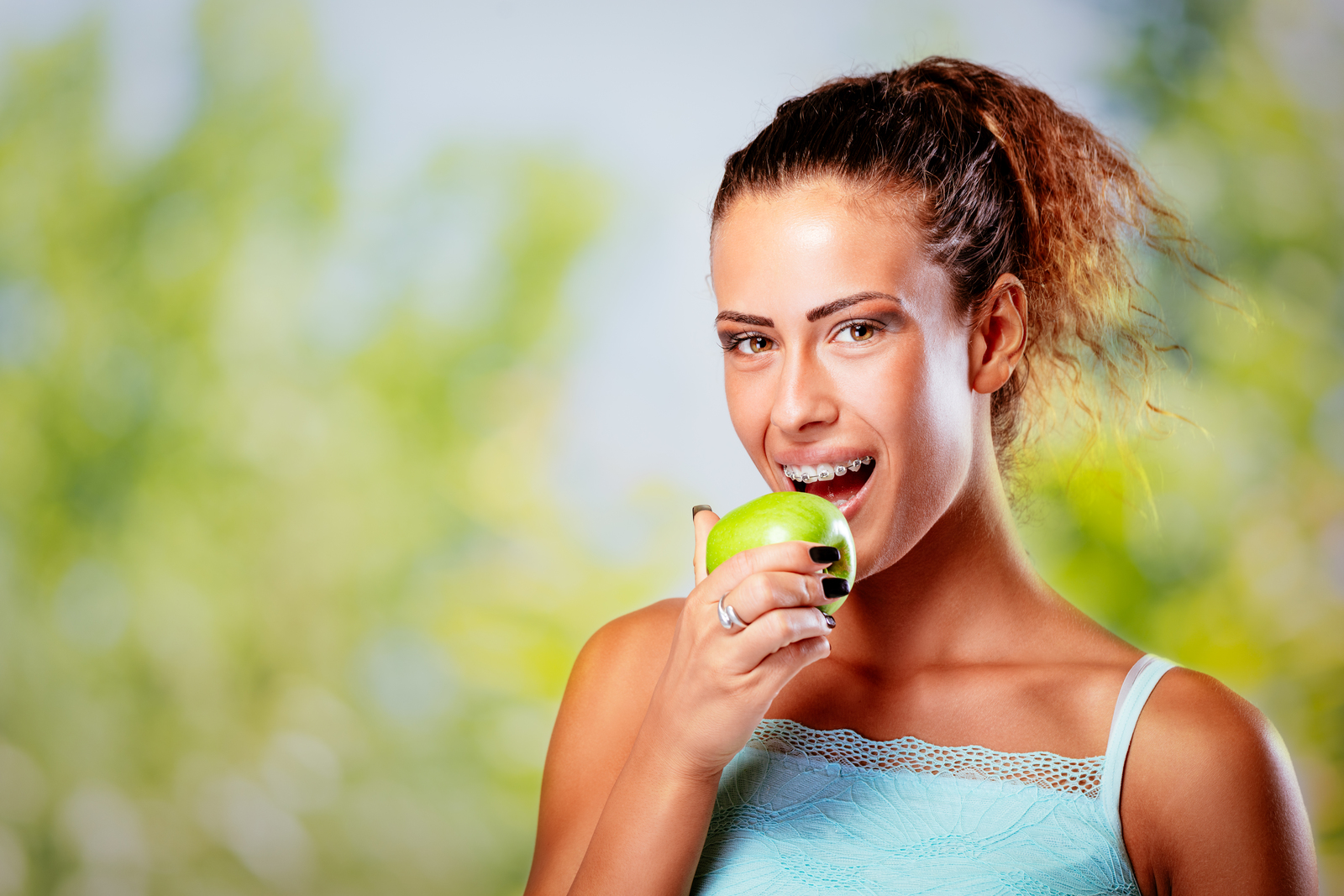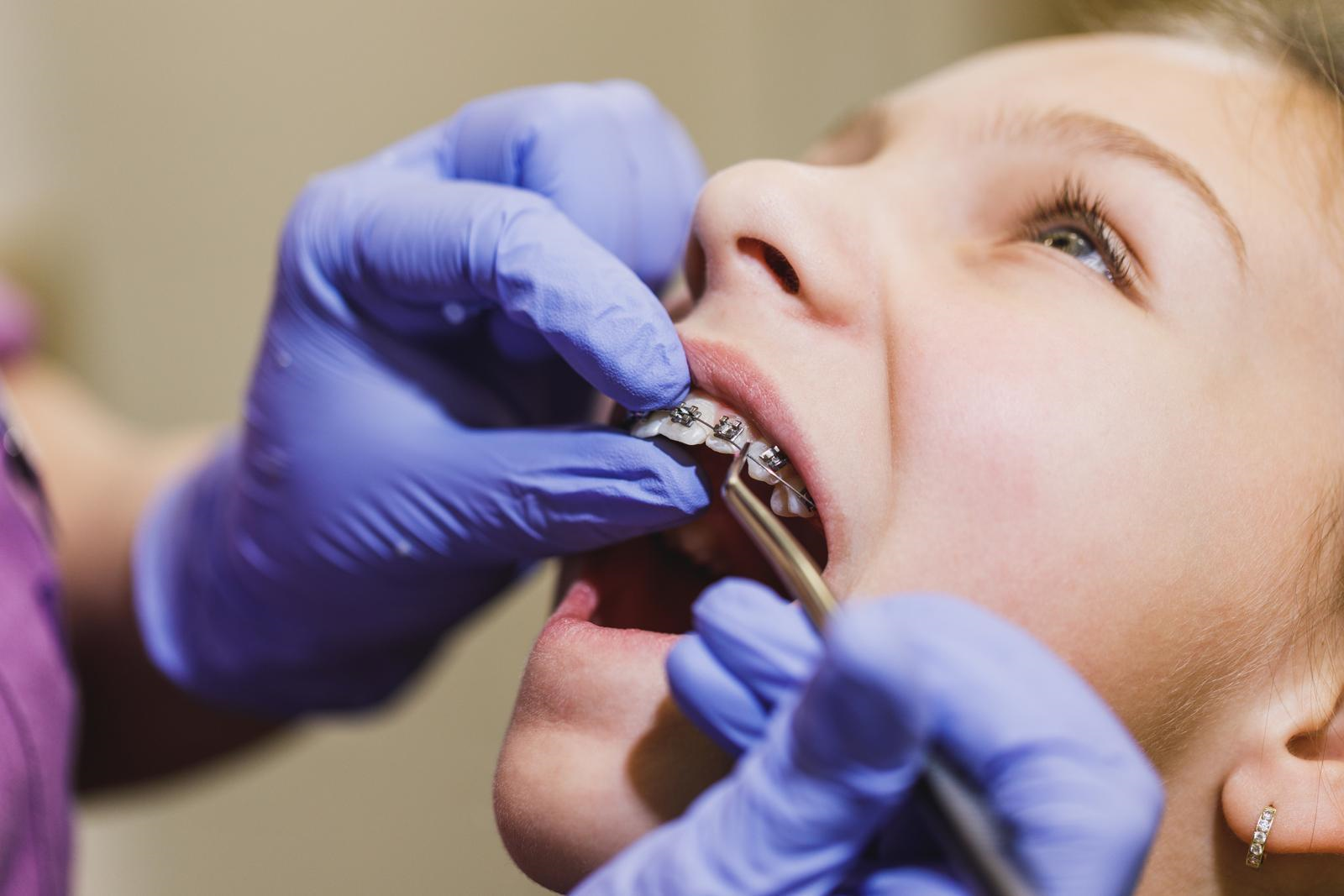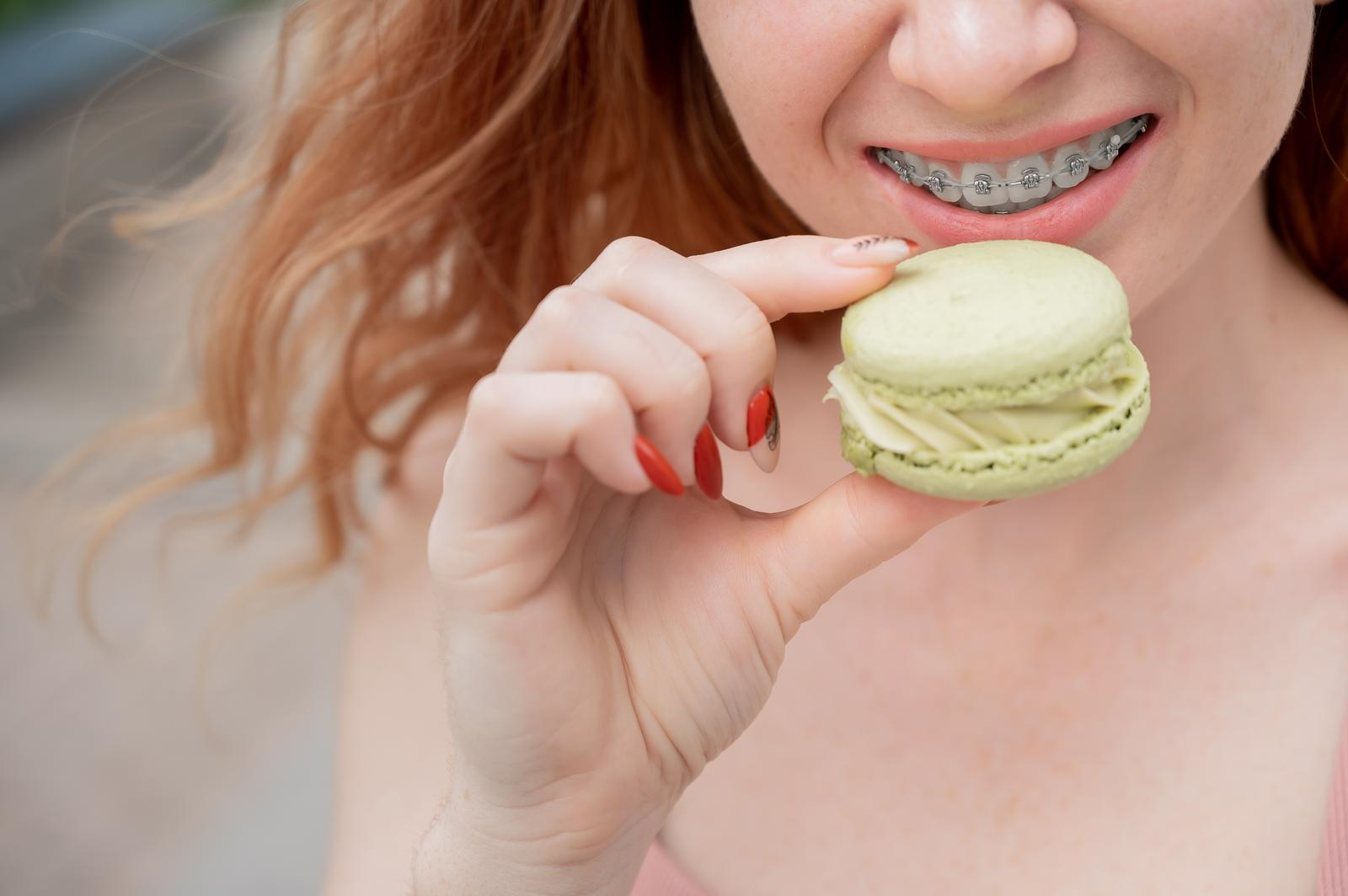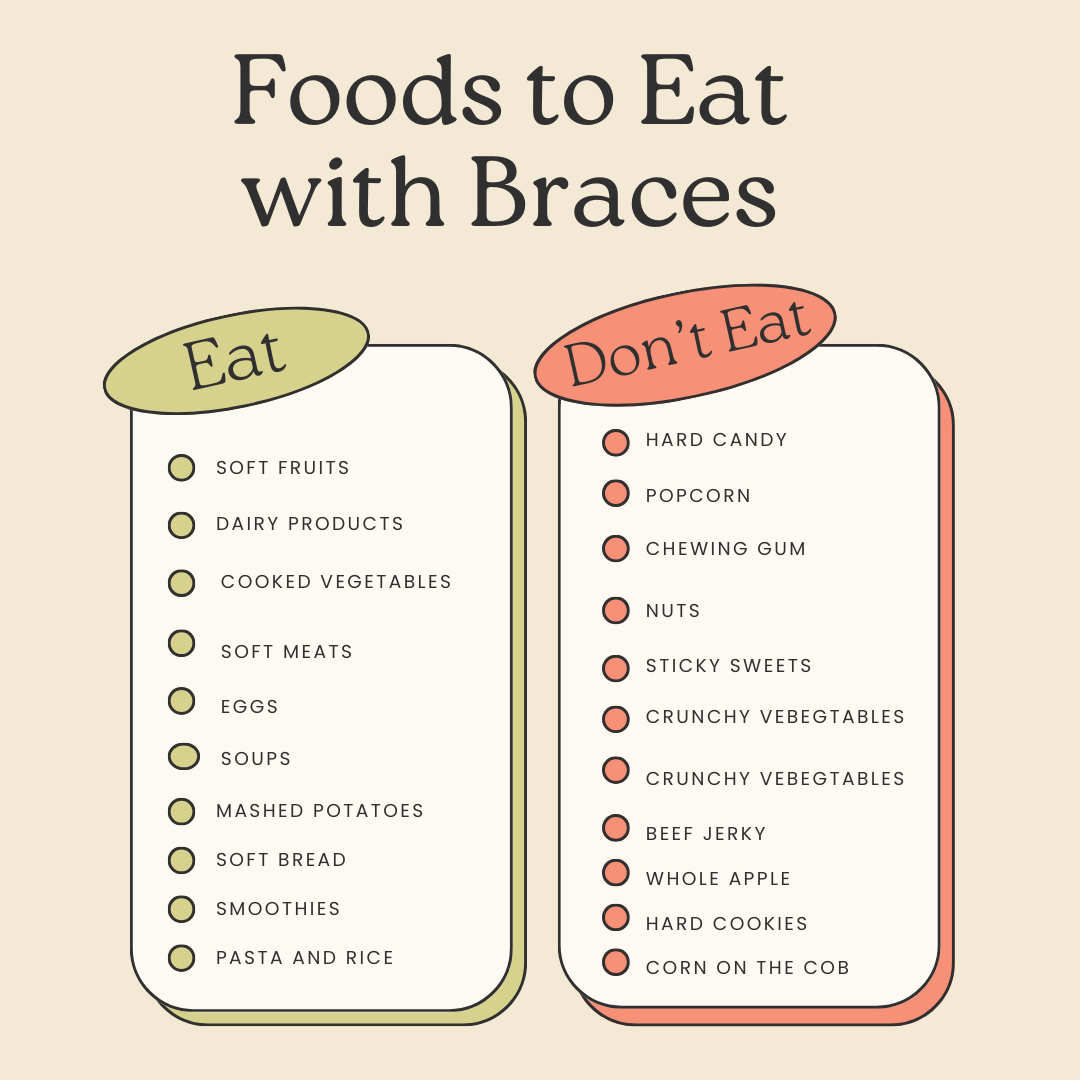General & Cosmetic Dentistry

Getting dental braces is a big step toward achieving a beautiful, healthy smile, but it does come with a few lifestyle changes – especially when it comes to food.
If you’re wondering what’s safe to eat and what’s better to avoid, you’re not alone. Knowing how to make the right food choices will help you protect your braces, avoid discomfort, and keep your treatment on track. In this post, we will show you some foods you can eat or avoid to make your braces journey as smooth as possible!
Wearing dental braces is a journey toward a beautiful smile, but it requires some adjustments, especially to your diet. Here’s why making these changes is so important:
Braces are designed to gently guide your teeth into their proper position, but they’re not indestructible. Hard, sticky, or chewy foods can bend wires, loosen brackets, or even break parts of your braces, delaying your treatment progress.
By choosing brace-friendly foods, you’ll keep your orthodontic work intact and avoid unnecessary trips to the dentist for repairs.
Certain foods can make wearing braces uncomfortable, especially during the early days or after adjustments. Hard or crunchy foods can put extra pressure on your teeth and braces, leading to soreness.
Soft foods like yogurt, mashed potatoes, or pasta are kinder to your mouth and make the adjustment period much more bearable.

No one wants to have their braces removed only to discover white spots or stains on their teeth. Sugary and acidic foods can increase the risk of plaque buildup and discoloration around your brackets.
By limiting these types of foods and maintaining good oral hygiene, you’ll ensure your teeth look as great as your new smile feels.
Wearing braces often means rethinking how you eat. Biting into hard foods with your front teeth, for instance, can put stress on your braces.
Instead, it’s best to cut food into smaller pieces and chew with your back teeth. This simple change can protect your braces and make eating more comfortable.

Now that you know why certain changes need to be made when wearing braces, let’s take a closer look at some foods you might want to avoid during your treatment time.
Hard candies can break brackets or bend wires, and their stickiness can trap sugar around your braces, increasing the risk of cavities.
Gum easily gets stuck in braces, making it tough to remove and potentially pulling on your wires or brackets.
The kernels can get lodged in your braces, causing discomfort and making it hard to clean thoroughly.
Hard and crunchy, nuts can damage your braces or get stuck in hard-to-reach places.
Raw carrots, celery, and similar veggies can snap wires or loosen brackets. Opt for cooked or steamed versions instead.
Caramel, toffee, and other sticky sweets are a nightmare for braces, as they cling to wires and are nearly impossible to clean off.
Chips like tortilla or kettle-cooked varieties can break parts of your braces or get stuck in small crevices.

Its toughness can strain your braces and even pull on wires or brackets, potentially causing damage.
Hard or chewy bread, like baguettes or pizza crust, can put excessive pressure on your braces and cause discomfort.
Biting directly into corn on the cob can loosen brackets or wires. Instead, cut the kernels off the cob to enjoy safely.
Chewing ice is a big no-no, as it can crack brackets and bend wires, not to mention causing sensitivity in your teeth.
Crunchy pretzels can snap wires and loosen brackets, making them a risky snack choice.
Biting into a whole apple can put too much pressure on your braces. Instead, slice them into smaller pieces for easier chewing.
Steak or other tough cuts of meat require excessive chewing, which can stress your braces and lead to discomfort.
Hard or overbaked cookies can break brackets or wires. Stick to softer options or dunk them in milk to soften before eating.
Biting into a whole apple can put too much pressure on your braces. Instead, slice them into smaller pieces for easier chewing.

When you’re wearing dental braces, you can still enjoy plenty of delicious foods that are gentle on your teeth and braces. These options are safe, easy to chew, and won’t damage your orthodontic work:
Although bonding can sometimes be used for small cavities, it’s more focused on cosmetic improvements.
Maintaining a braces-friendly diet isn’t just about what you eat – it’s also about how you eat. So, before we wrap up this post, let’s quickly take a look at some tips that could help in ensuring your orthodontic treatment progresses smoothly:
Whether it’s fruits, vegetables, or sandwiches, cutting food into bite-sized pieces reduces the pressure on your braces and makes chewing easier.
Avoid biting into hard or crunchy foods with your front teeth, as this can stress your brackets. Instead, chew gently using your molars.
Food particles can easily get stuck in braces, so rinsing your mouth with water after meals can help keep your braces clean until you brush.
For foods like apples or corn on the cob, make sure to slice or remove kernels to avoid damaging your braces.
Eating with braces requires extra attention to hygiene. Brush and floss regularly to prevent plaque buildup and keep your teeth healthy.
Following these tips will protect your braces and ensure that your treatment stays on track, helping you achieve the best results for your smile.
Accidents happen, and sometimes braces can get damaged despite your best efforts. Whether it’s a broken wire, a loose bracket, or a missing band, it’s important to act quickly to avoid further complications.
First, stay calm and assess the situation. If a wire is poking your cheek or gums, use orthodontic wax to cover the sharp end until you can see your dentist.
For loose brackets, try to keep them in place and avoid touching them. If a band comes off, save it and bring it with you to your appointment.
Next, contact your orthodontist as soon as possible. Let them know what’s happened, and they’ll guide you on the next steps. In most cases, they’ll schedule an emergency visit to repair the damage and ensure your treatment stays on track.